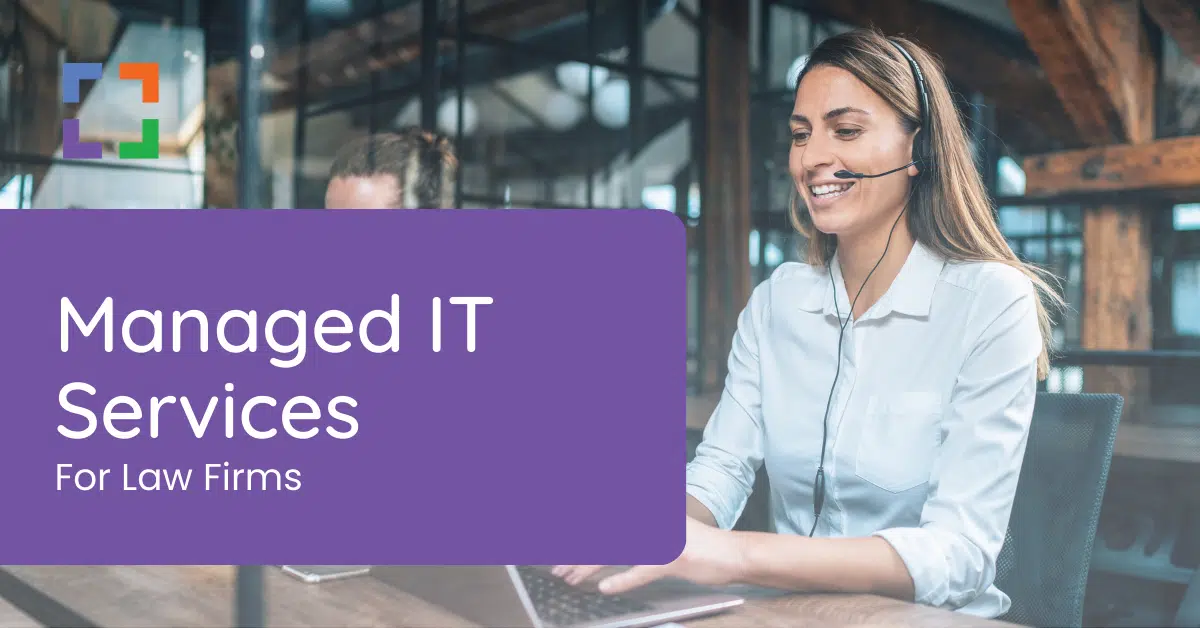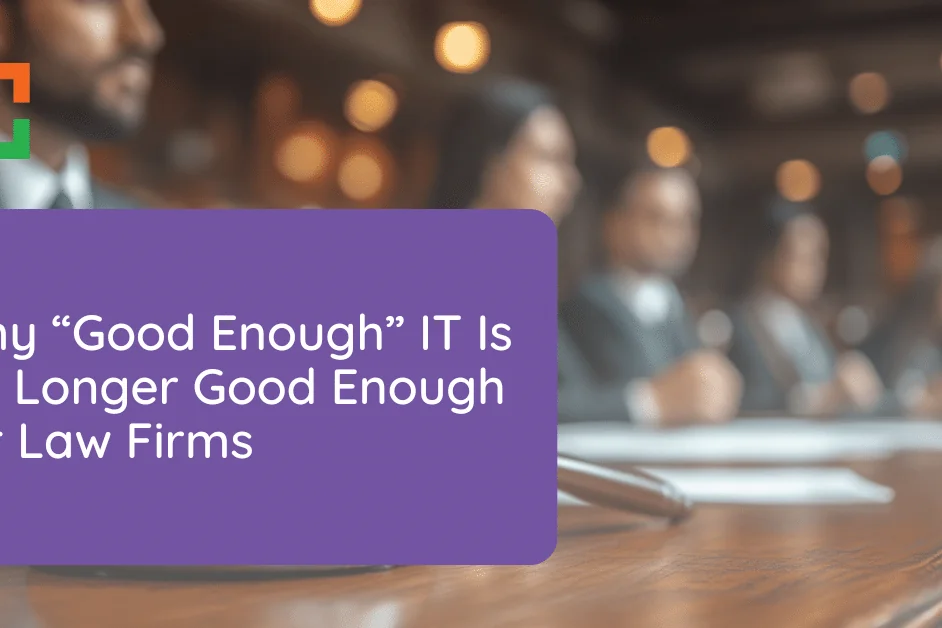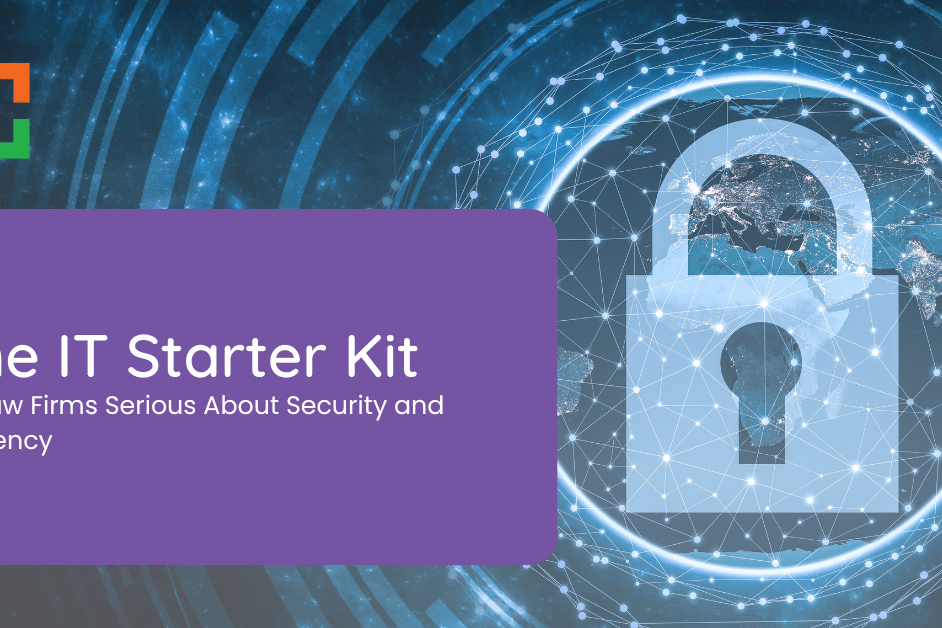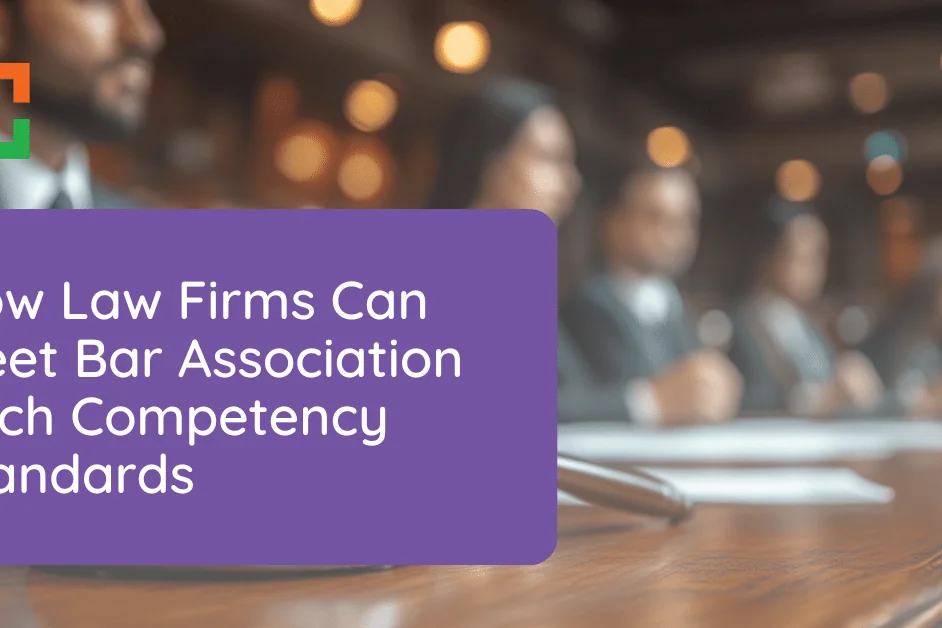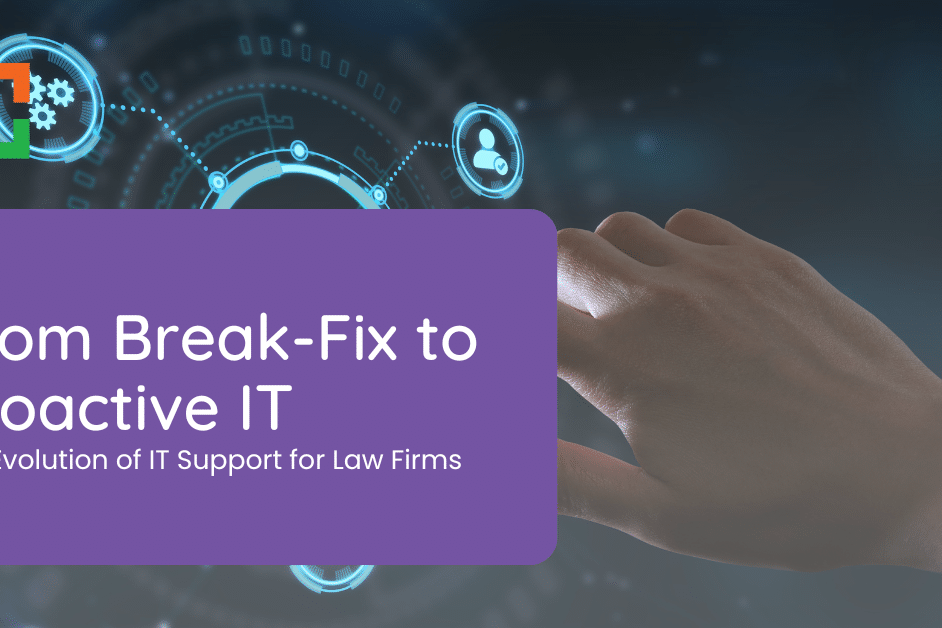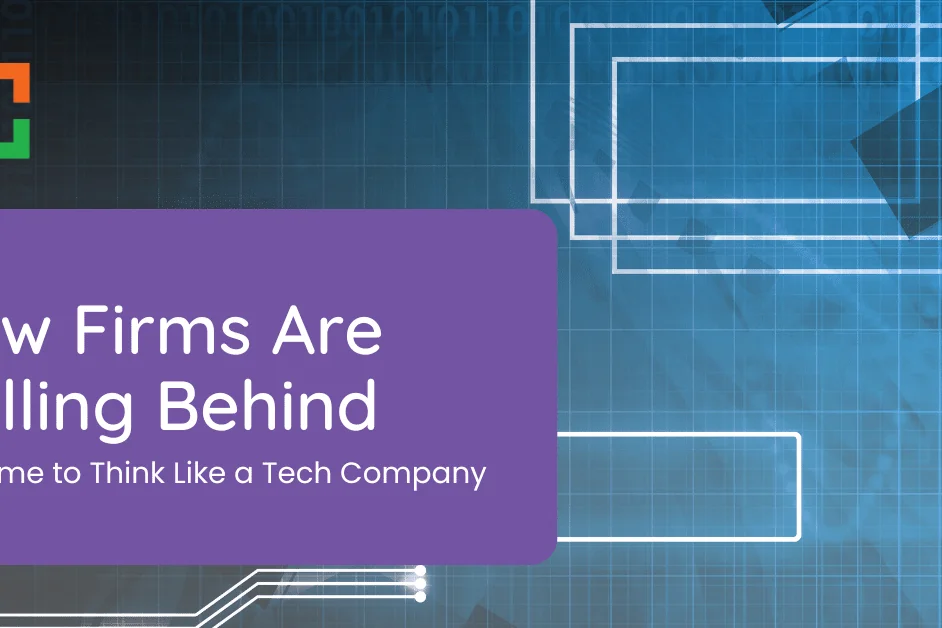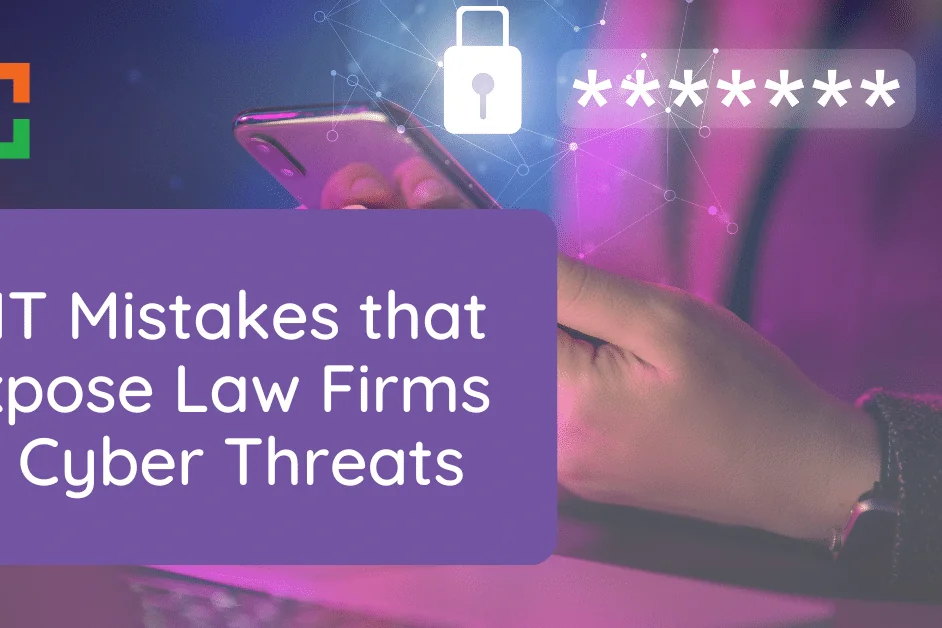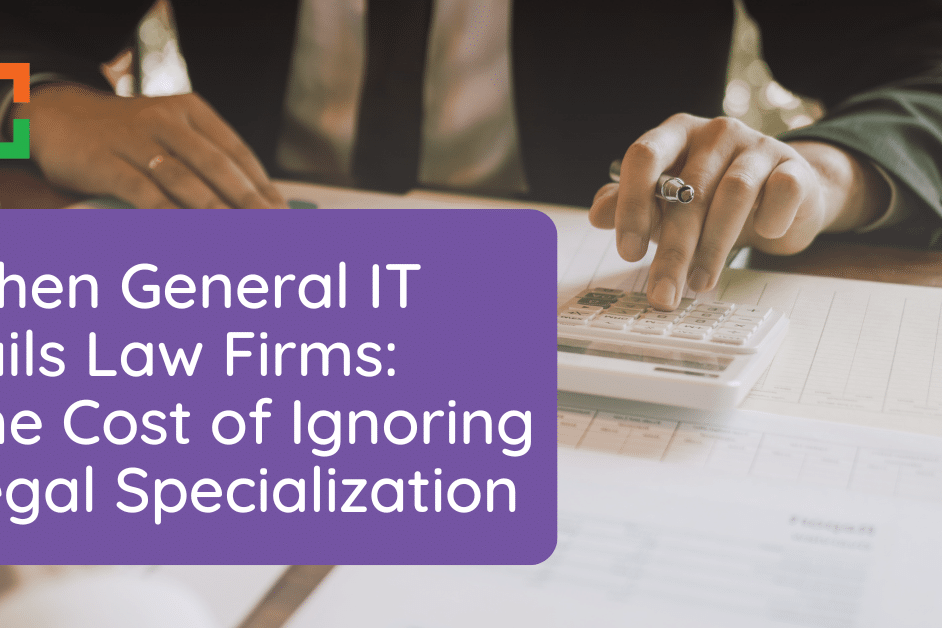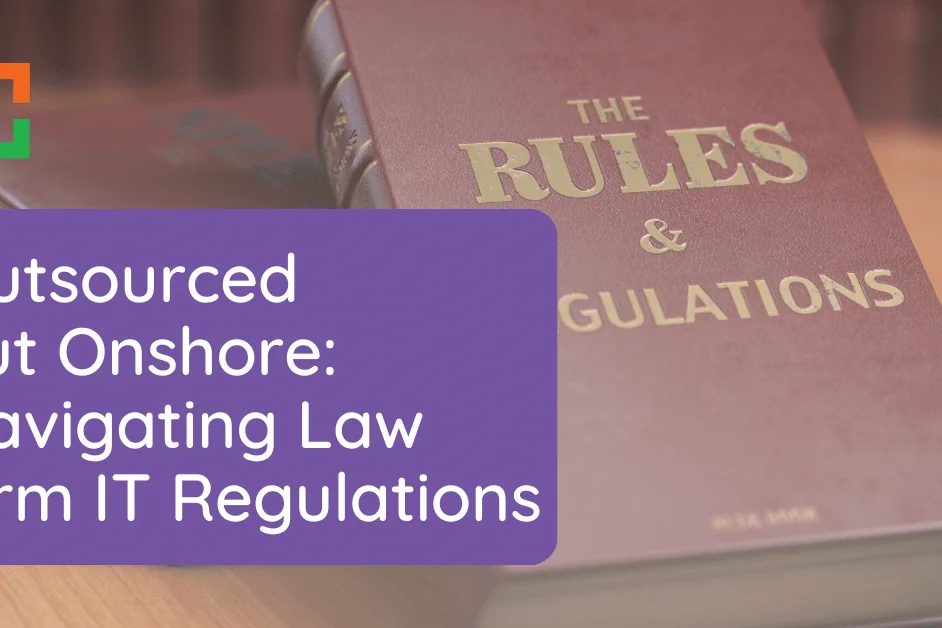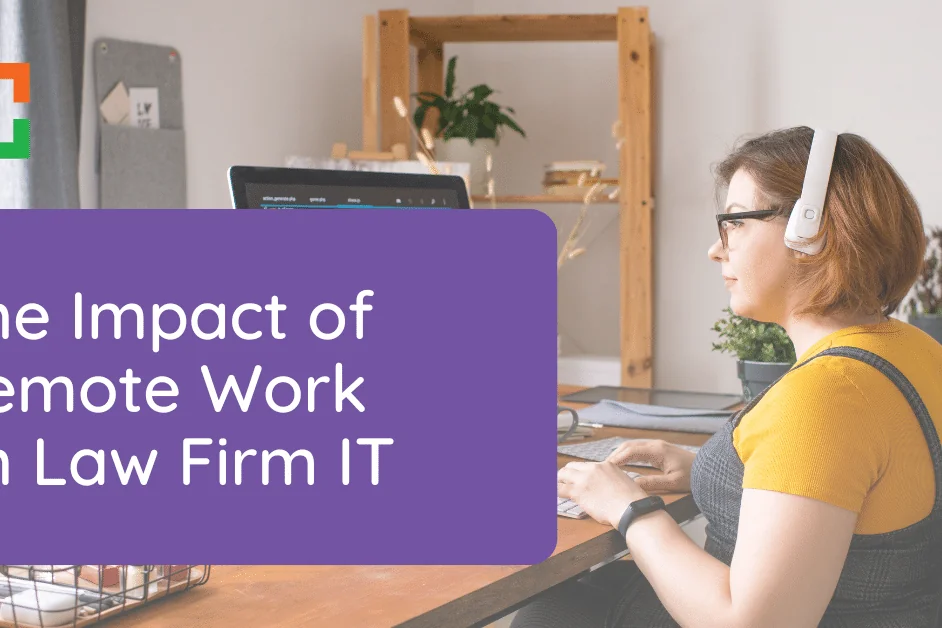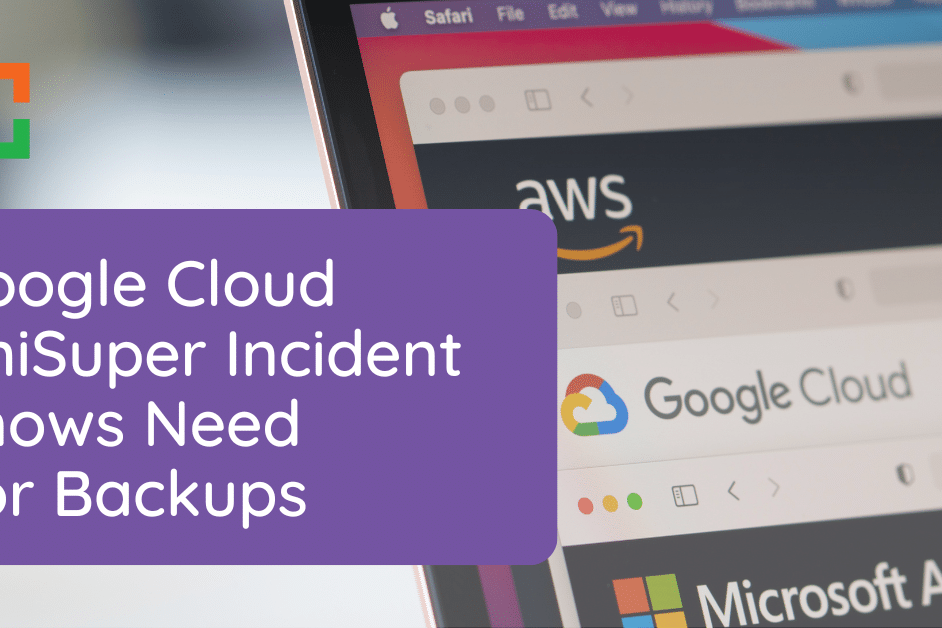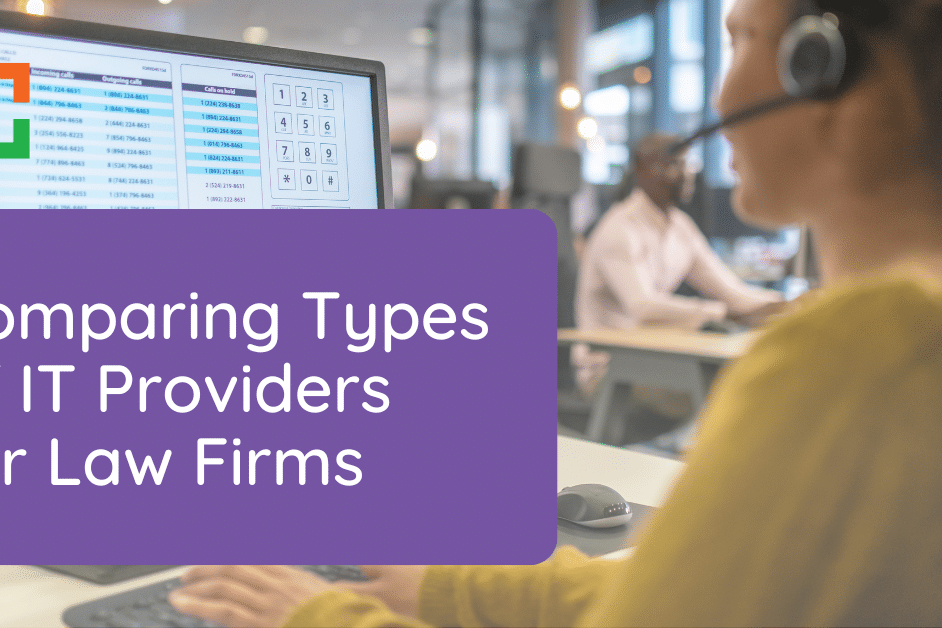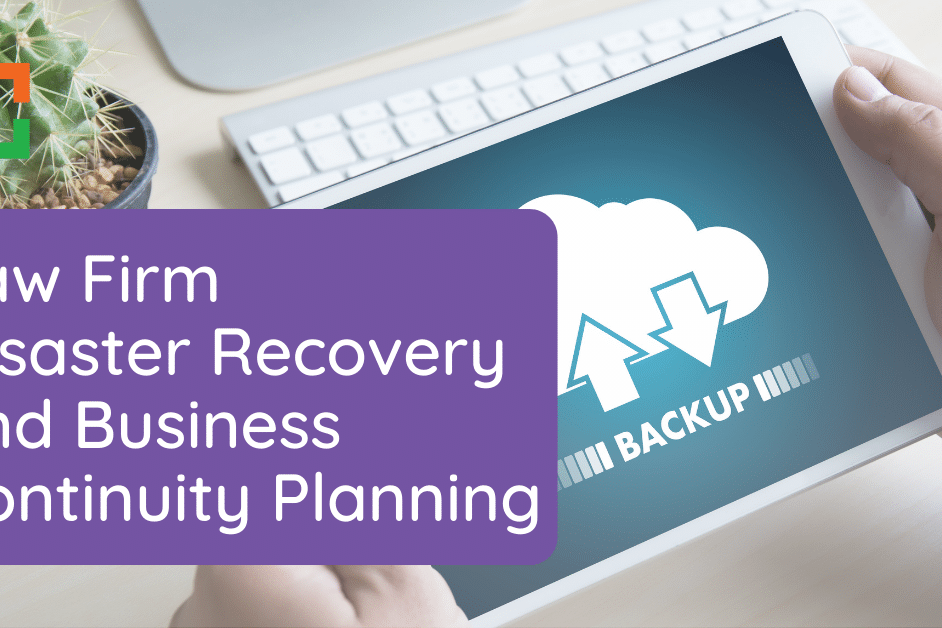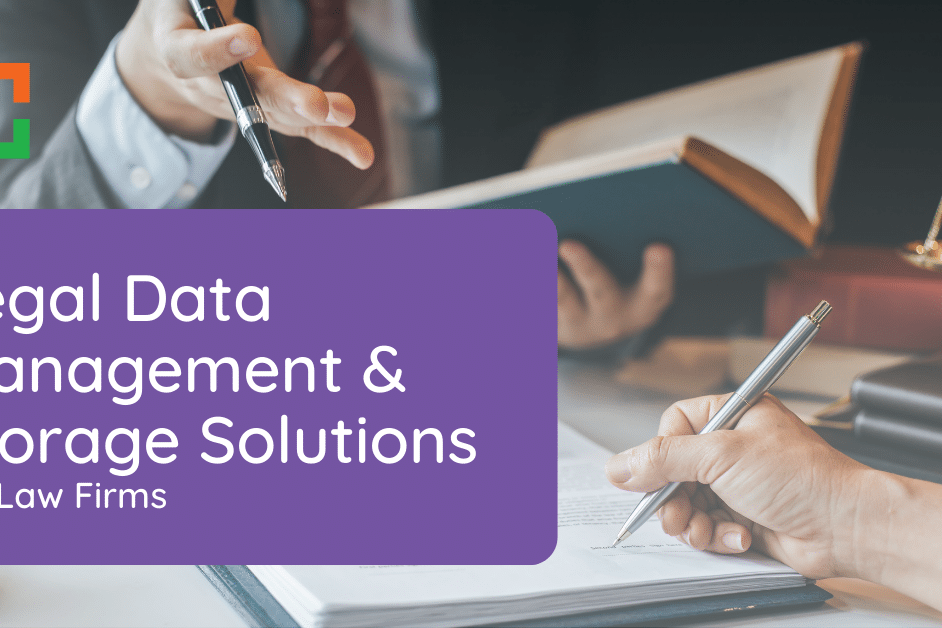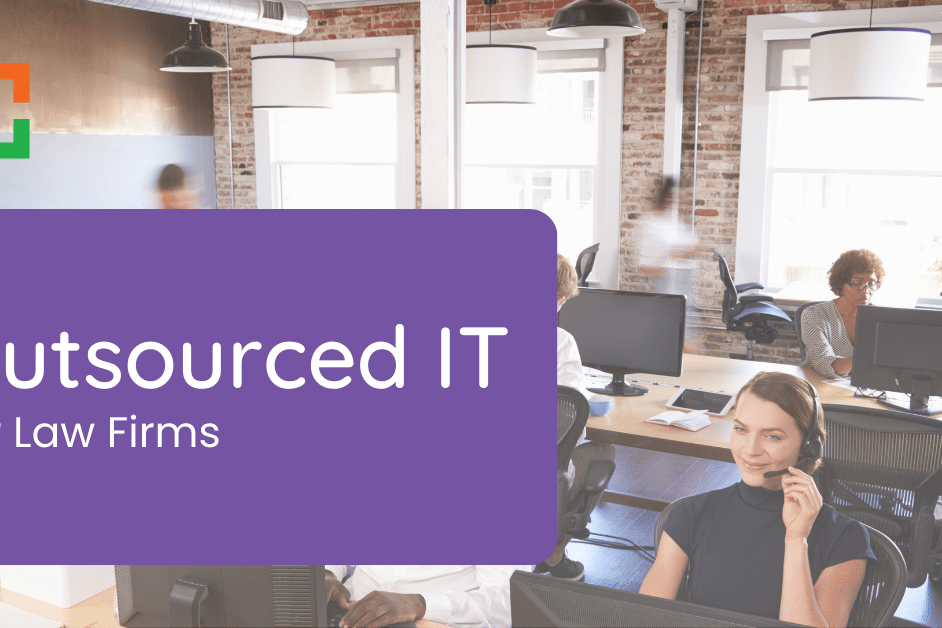How to Get Your Law Firm NIST-Aligned and Cyber Insurance Ready
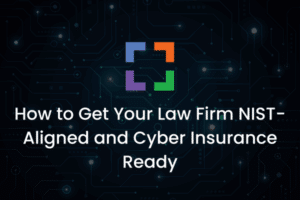 Cybercriminals are targeting law firms at record levels, and the stakes have never been higher. A single breach can expose client data, harm your reputation, and trigger costly legal settlements, often without full insurance coverage.
Cybercriminals are targeting law firms at record levels, and the stakes have never been higher. A single breach can expose client data, harm your reputation, and trigger costly legal settlements, often without full insurance coverage.
Most law firms still depend on fragmented IT systems that do not meet NIST-aligned best practices. The National Institute of Standards and Technology, sets the most widely adopted cybersecurity framework in the U.S., and failing to meet it leaves firms exposed to growing cyber threats while jeopardizing their ability to secure affordable insurance.
In this blog, you’ll learn what NIST alignment involves, how it affects cyber insurance eligibility, and how Uptime Practice Next provides a complete, audit-ready IT system designed for law firms.
In This Article
- Why Law Firms Can’t Afford to Ignore NIST or Cyber Insurance in 2025
- What NIST-Aligned Security Really Means for Law Firms
- The Cyber Insurance Landscape: What Law Firms Need to Qualify in 2025
- Mapping Uptime Practice Next to NIST and Cyber Insurance Requirements
- Secure, Compliant, and Ready for Anything
Why Law Firms Can’t Afford to Ignore NIST or Cyber Insurance in 2025
Law firms are prime targets in the modern cybercrime economy. They manage sensitive client data, intellectual property, and confidential case files. Attackers see this information as valuable for sale, ransom, or fraud.
The risk isn’t theoretical. In 2024, Gunster, a prominent U.S. firm, agreed to an $8.5 million settlement after a breach exposed personal data. Many firms wouldn’t recover from a similar incident.
The financial impact is growing. IBM’s 2025 Cost of a Data Breach Report found that breaches involving compliance failures cost organizations $1.04 million more than the average incident.
Cyber insurers have responded by tightening requirements, often demanding proof of:
- Multifactor authentication
- Data encryption
- Endpoint detection and response (EDR)
- Tested backups
- Documented incident response plans
Firms without these measures face higher premiums, limited coverage, or outright denials. NIST alignment has become the foundation for client trust, insurability, and operational resilience.
Security & Compliance are Non-Negotiable for Law Firms
With Uptime Practice Next, get:
- Multi-Factor Authentication
- Email Encryption
- Compliant Backups
- Desktop Protection
- Ransomware Protection
- and More!
What NIST-Aligned Security Really Means for Law Firms
NIST-aligned security standards are now a baseline expectation for law firms. They’re central to protecting client data, maintaining insurance coverage, and meeting the demands of corporate and regulatory clients. Yet many firms still misunderstand what alignment involves and how it applies to daily operations.
Understanding the NIST Cybersecurity Framework
The National Institute of Standards and Technology publishes the Cybersecurity Framework (CSF), recognized as the gold standard for building and maintaining strong security.
The framework is organized into five core functions:
- Identify: Catalog all systems, applications, and devices; know where sensitive data is stored; and track who has access
- Protect: Secure assets through multifactor authentication, encryption, access controls, and ongoing security training
- Detect: Continuously monitor systems and networks to spot anomalies and potential threats quickly
- Respond: Maintain a documented and tested incident response plan to contain and remediate breaches
- Recover: Restore operations promptly using validated backups and disaster recovery processes
NIST alignment demonstrates to clients, regulators, and insurers that security is intentional, structured, and verifiable. Many insurers now base underwriting decisions on the presence of these controls, and many corporate clients require their legal partners to operate at this level.
Related – The Real Value of Legal Specialty in IT Services: You’re a law firm, so you should logically choose IT support that knows how to actually support you. Learn more.
Where Law Firms Fall Short
Many firms believe they’re secure because they have antivirus software, a firewall, or cloud-based email filtering. While these tools are important, they cover only a fraction of the NIST Cybersecurity Framework.
- A firewall won’t stop an attacker who gains access through stolen credentials.
- Antivirus won’t recover encrypted files after a ransomware attack.
- Email filtering won’t protect against a vendor data breach.
The most common gaps include incomplete asset inventories, inconsistent MFA enforcement — despite research by Microsoft showing that MFA can block more than 99.2 percent of account compromise attacks — limited vendor risk management, untested backups, and outdated or missing incident response plans.
Alignment with NIST requires documented policies, continuous testing, and a culture that prioritizes security. Without this discipline, firms risk failing insurer audits, losing coverage, and eroding client trust, arguably more damage that can outlast any financial loss from a breach.
Key takeaway: For law firms, NIST alignment is both a technical benchmark and a business requirement. It proves that security, compliance, and client protection are embedded in everyday operations.
The Cyber Insurance Landscape: What Law Firms Need to Qualify in 2025
Cyber insurance has shifted from a broad safety net to a highly conditional product. Rising claims from ransomware, phishing, and vendor breaches have forced carriers to tighten eligibility, often basing coverage decisions on whether firms meet NIST-aligned security standards.
For law firms, coverage now depends on proving that critical preventative measures are in place.
Why Cyber Insurance Is Harder to Obtain
Insurers are under pressure after years of escalating losses. Claims from professional services, including law firms, are among the most expensive, with an average breach cost of $5.83 million, according to the IBM report. That’s a 5 percent increase over last year.
Underwriters now require detailed security questionnaires, documentation, and sometimes third-party audits before issuing or renewing a policy. NIST controls have become the default benchmark because they provide a clear, recognized framework for assessing cyber risk.
Core Security Requirements Insurers Now Expect
To qualify for coverage, or to avoid steep premium increases, most carriers require proof of:
- Multifactor authentication across all systems and accounts
- Data encryption for information in transit and at rest
- Endpoint detection and response (EDR) for continuous threat monitoring
- Regular, tested backups stored offsite or in secure cloud environments
- Documented incident response plan that is tested at least annually; IBM found that planning and testing an incident response reduced breach costs by an average of $1.49 million
- Vendor risk management for all third-party providers with access to firm or client data
The Cost of Falling Short
Firms that cannot meet these standards risk coverage denial, non-renewal, or dramatically higher premiums. Even when coverage is granted, missing controls can lead to reduced payout limits or policy exclusions.
Beyond the financial impact, failing to secure coverage signals to clients that the firm isn’t fully prepared to protect their data — an impression that can damage relationships and credibility.
Key takeaway: Cyber insurance is required to prove to and client that your firm has done everything possible to prevent a breach. NIST-aligned controls are now the baseline for securing favorable coverage and protecting your practice.
Related – Managed IT Services for Law Firms: Whenever you’re ready, we’re here to managed your IT. Read this article to learn more about the value of outsourcing your IT to a professional.
Mapping Uptime Practice Next to NIST and Cyber Insurance Requirements
Handling NIST-aligned security and cyber insurance demands can feel overwhelming. It usually involves multiple tools, continuous monitoring, and detailed proof for audits.
Practice Next simplifies that entire process with a single, purpose-built platform designed to meet both frameworks and insurer expectations from day one.
NIST Alignment Built Into Practice Next
Practice Next delivers all five core NIST functions with an integrated, legal-specific tech stack:
- Identify: Asset inventory, user access tracking, and legal-grade cloud document management via LexWorkplace
- Protect: Multifactor authentication, encryption, access controls, security training, and managed desktop/laptop security
- Detect: 24/7 monitoring, managed endpoint detection and response (EDR), and Microsoft 365 identity threat detection
- Respond: Support for incident response planning, role-based access policies, and help completing insurer and client security forms
- Recover: Disaster recovery readiness, and compliant email archives
Ready for Insurer Security Questionnaires
Cyber insurers increasingly demand documented evidence of key controls: MFA, incident response planning, encryption, monitoring.
Practice Next automatically provides:
- Enforcement reports for MFA policies
- Encryption confirmation for files and cloud storage
- Backup logs and testing records
- Security policy documents and user activity logs
- Completed security/compliance forms that align with underwriting questionnaires
These outputs directly match underwriting checklists and significantly reduce audit friction. For example, carriers now routinely require MFA, EDR, tested incident response plans, and backups to issue or renew coverage.
Key takeaway: Practice Next gives your firm both NIST alignment and cyber insurance readiness — fully configured and documented — without the scramble, gaps, or guesswork.
Would You Rather: Serve Clients or Manage IT?
Use Uptime Practice Next for:
- Unlimited IT Support
- Legal Software Consultation
- Cloud Storage
- Security Protection
- Data Backups
- and More!
Secure, Compliant, and Ready for Anything
The cost of a data breach for professional services firms now averages $5.83 million. Cyber insurers have raised the bar, requiring proof that law firms have implemented strict, NIST-aligned controls before offering coverage.
Clients expect the same level of diligence. Falling short means higher premiums, coverage denials, and reputational damage that can take years to repair.
Practice Next gives you a direct path to meeting these demands. It brings every required control — MFA, encryption, monitoring, backups, and documented policies — into a single, fully managed platform designed for law firms. With it, you can face audits, insurer reviews, and client security questionnaires with confidence.
Get in touch with a legal IT expert to bring your firm into full NIST alignment and insurer readiness. One of our legal technology experts will connect with you to discuss your goals, challenges, and current technology.
We’ll recommend solutions tailored to your firm, and if we’re a fit, you’ll have a proposal in hand within 24 business hours.
Uptime Practice:
The IT & Cloud Platform for Law Firms.
Uptime Practice is a suite of Managed IT and cloud services, made exclusively for law firms.
Practice Next
Technology + Legal Software Support for Modern Law Firms
Practice Next is a suite of Managed IT, Legal Software Support, and Cloud Essentials, made just for law firms.
-
Practice Next is a suite managed IT, technology essentials and legal software support.
-
Practice Next includes unlimited IT and legal software support, Microsoft 365, legal-centric cloud storage and more.
-
Practice Next pairs great with cloud-based legal software such as Clio Manage, CosmoLex, MyCase and more.
Practice Go
Cloudify Your Legal App
Does your law firm already have a cloud strategy, but have one premise-based application still running on onsite servers? Practice Go is for you.
- With Practice Go, we effectively turn your desktop/server- based legal software into a cloud application (a Published App), freeing your firm from the limitations of traditional software.
- Practice Go can cloudify your PCLaw, Time Matters, Tabs3, ProLaw, Juris, QuickBooks and more.
Practice Foundation
Complete Private Cloud for Law Firms
If your law firm needs a central, secure cloud platform for all of your legal software, documents and data, Practice Foundation is for you.
-
Practice Foundation is an end-to-end cloud platform that will host all of your firm's applications and documents, and will optionally include Office 365 + unlimited IT support. Everyone in your firm logs into a Virtual Desktop where they'll find all of their apps and docs.
-
Practice Foundation works with PCLaw, Time Matters, Tabs3, ProLaw, Juris, QuickBooks, Timeslips, TrialWorks, Adobe Acrobat and more.
Not Sure Which Edition You Need?
No problem. Check out our quick Comparison Chart for Uptime Practice, or Get in Touch to talk with our sales team.

Dennis Dimka
As the founder and CEO of Uptime Legal Systems, I've had the privilege of guiding our company to become a leading provider of technology services for law firms.
Our growth, both organic and through strategic acquisitions, has enabled us to offer a diverse range of services, tailored to the evolving needs of the legal industry.
Being recognized as an Ernst & Young Entrepreneur of the Year Finalist and seeing Uptime Legal ranked among the Inc. 5000 list of fastest-growing private companies in America for eight consecutive years are testaments to our team's dedication.
At Uptime Legal, we strive to continuously innovate and adapt in the rapidly evolving legal tech landscape, ensuring that law firms have access to the most advanced and reliable technology solutions.
Related Posts
January 20, 2025
5 IT Mistakes that Expose Law Firms to Cyber Threats
September 26, 2024
Outsourced but Onshore: Navigating Law Firm IT Regulations
June 27, 2024
The Impact of Remote Work on Law Firm IT
May 29, 2024
The Real Value of Legal Specialty in IT Services
April 24, 2024
Comparing Types of IT Providers for Law Firms
February 28, 2024
Law Firm Disaster Recovery and Business Continuity Planning
February 22, 2024
Types of IT Services for Law Firms
February 8, 2024
Legal Data Management & Storage Solutions for Law Firms
February 1, 2024
How to Choose the Right IT Provider – A Guide for Law Firms
January 9, 2024
VoIP for Law Firms
December 15, 2023
Cybersecurity for Law Firms
December 8, 2023
Managed Cloud Services for Law firms
November 15, 2023
Outsourced IT for Law Firms
November 9, 2023
Managed IT Services for Law Firms
October 11, 2023
IT Support for Law Firms
June 17, 2019
Law Firm IT – What Are Your Options?
June 10, 2019

